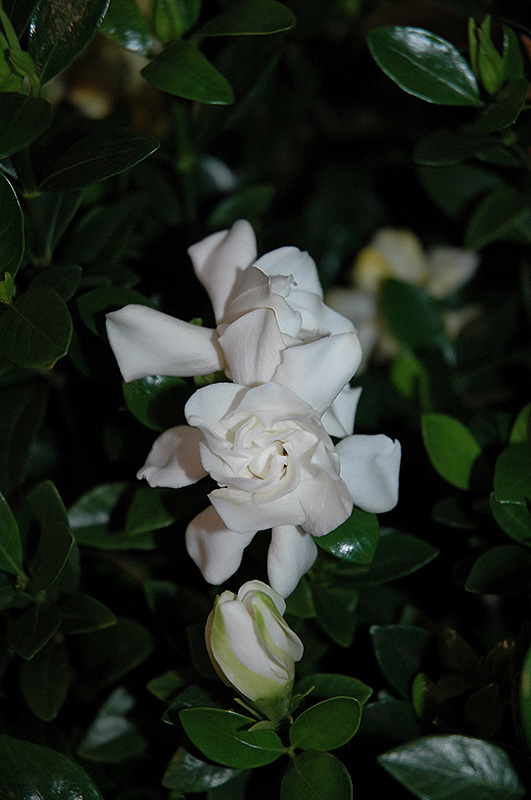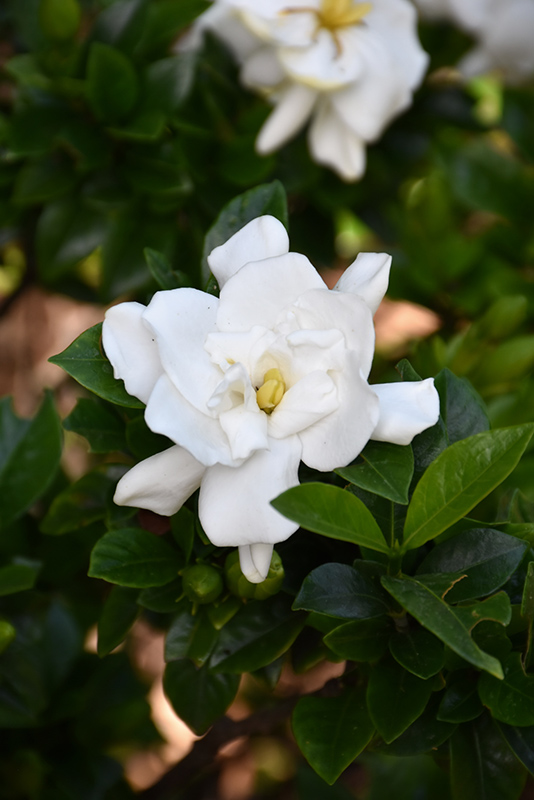Jubilation™ Gardenia
Gardenia jasminoides 'Leeone'
Height: 4 feet
Spread: 3 feet
Sunlight:
![]()
![]()
Hardiness Zone: 7a
Description:
A wonderful Gardenia variety that is hardier than the species with some frost resistance; an upright bushy shrub with elegant, fragrant white flowers contrasted by deep green foliage; makes a fine hedge
Ornamental Features
Jubilation™ Gardenia features showy fragrant double white flowers at the ends of the branches from late spring to late summer. The flowers are excellent for cutting. It has dark green evergreen foliage. The glossy pointy leaves remain dark green throughout the winter.
Landscape Attributes
Jubilation™ Gardenia is a dense multi-stemmed evergreen shrub with an upright spreading habit of growth. Its average texture blends into the landscape, but can be balanced by one or two finer or coarser trees or shrubs for an effective composition.
This is a relatively low maintenance shrub, and should only be pruned after flowering to avoid removing any of the current season's flowers. It is a good choice for attracting bees and butterflies to your yard. It has no significant negative characteristics.
Jubilation™ Gardenia is recommended for the following landscape applications;
- Accent
- Mass Planting
- General Garden Use
Planting & Growing
Jubilation™ Gardenia will grow to be about 4 feet tall at maturity, with a spread of 3 feet. It has a low canopy. It grows at a medium rate, and under ideal conditions can be expected to live for approximately 30 years.
This shrub does best in partial shade to full shade. Keep it well away from hot, dry locations that receive direct afternoon sun or which get reflected sunlight, such as against the south side of a white wall. It does best in average to evenly moist conditions, but will not tolerate standing water. It may require supplemental watering during periods of drought or extended heat. It is not particular as to soil pH, but grows best in rich soils. It is somewhat tolerant of urban pollution. Consider applying a thick mulch around the root zone in winter to protect it in exposed locations or colder microclimates. This is a selected variety of a species not originally from North America.


